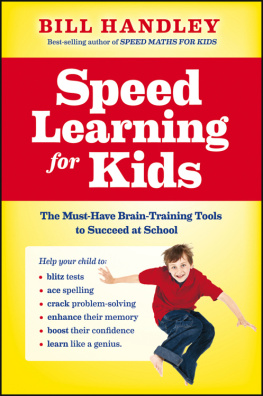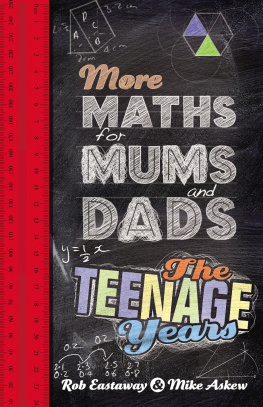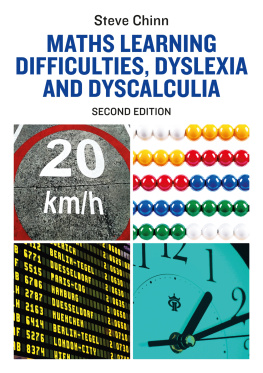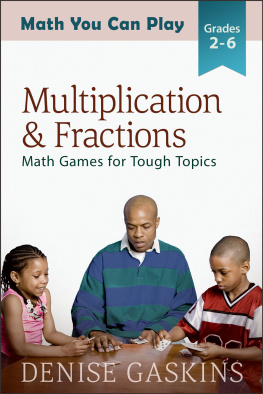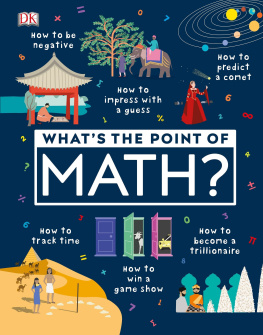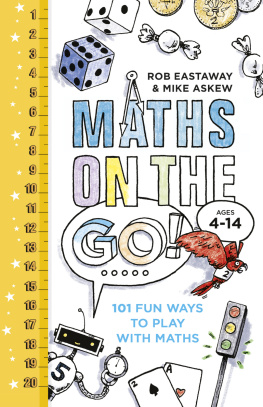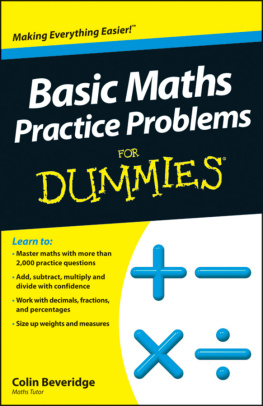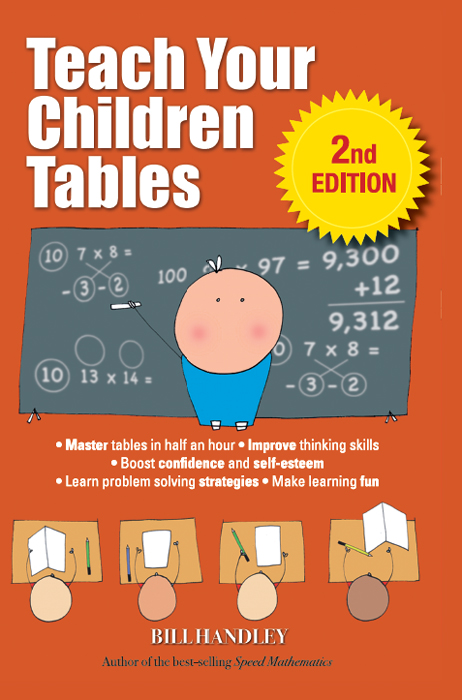Contents

First published 2007 by Wrightbooks
an imprint of John Wiley & Sons Australia, Ltd
42 McDougall Street, Milton Qld 4064
Office also in Melbourne
Bill Handley 2007
The moral rights of the author have been asserted
National Library of Australia Cataloguing-in-Publication data:
Handley, Bill.
Teach your children tables.
2nd ed.
Includes index.
ISBN-10: 0731406648
ISBN-13: 9780731406647 (pbk)
1. Multiplication Tables Study and teaching (Primary).
I. Title.
372.72
All rights reserved. Except as permitted under the Australian Copyright Act 1968 (for example, a fair dealing for the purposes of study, research, criticism or review), no part of this book may be reproduced, stored in a retrieval system, communicated or transmitted in any form or by any means without prior written permission. All inquiries should be made to the publisher at the address above.
Cover and internal image Photodisc, Inc.
Author photograph by Karl Mandl
Puzzle 1 on page 97 from The Puffin Book of Brainteasers by Eric Emmet
Wiley bicentennial logo: Richard J Pacifico
Also by Bill Handley
Speed Mathematics:
Secrets of Lightning Mental Calculation, 2nd edition
Speed Maths for Kids:
Helping Children Achieve Their Full Potential
Fast Easy Way to Learn a Language
Preface
The first edition of Teach Your Children Tables has enjoyed acceptance around the world. I have received mail and email from parents, educators and children telling me how much the book has helped them. As I have written follow-up books I have noticed that my explanations have undergone subtle changes. In particular, I have made a number of changes to the way I teach very young children. I have modified my explanations and included other methods and explanations to meet the difficulties of explaining multiplication and addition to children with no understanding of the concepts.
In this second edition of Teach Your Children Tables I have included a new chapter on solving cryptarithm or alphametic puzzles. Solving these maths puzzles is the most effective and pleasant way I know to develop an understanding of the properties of numbers.
I have also included a chapter that looks at an easy method of direct multiplication. I have not seen this method taught anywhere else.
Finally, I have added a chapter that provides advice for parents and teachers on the best ways to teach these methods.
Bill Handley
Melbourne
April 2007
< www.speedmathematics.com >
Introduction
Imagine your children going to school tomorrow, confident in their ability to do maths and get the right answer. Imagine your children being able to check their answers and correct any mistakes before the teacher, or anyone else, sees them. Imagine your children having a reputation for getting 100 per cent for most maths tests. What would that do to your childrens self-esteem? What would it do for their confidence? Wouldnt your children enjoy school more? You can teach your children to master the basic multiplication tables in around fifteen minutes. They dont need a super mathematical brain to do this, they just need an easy method, which I supply in this book.
People who excel at mathematics use better strategies than the rest of us, they dont necessarily have better brains. This book teaches simple strategies that can have you and your children multiplying large numbers in your heads, checking your answers, and enjoying mathematics in no time at all.
And here is a secret. People equate intelligence with mathematical ability. In other words, if you are able to do lightning calculations in your head, people will think you are intelligent in other areas as well. Students who learn these methods often improve markedly in other subject areas and they find they enjoy school much more. And mathematics usually becomes the childs favourite subject.
Speed and accuracy
One of my most important rules of mathematics is this:
The easier the method you use to solve a problem, the faster you will solve it with less chance of making a mistake.
It is an unfair rule, but it is a rule just the same. Why is it unfair? Imagine your teacher asks the class to solve 56 minus 9 in their heads. Some students try to solve the problem the same way they would with pencil and paper. They say to themselves, Six minus nine wont go so we borrow from the tens column. That means we now subtract nine from sixteen... This method is more complicated than simply subtracting ten (one too many) and then adding back the one to get the answer. Or subtracting six for an answer of fifty, and then subtracting another three.
The more complicated the method you use, the longer you take to solve a problem and the greater the chance of making a mistake. The people who use better methods are faster at getting the answer and make fewer mistakes, while those who use poor methods are slower at getting the answer and make more mistakes. It doesnt have much to do with intelligence or having a mathematical brain.
Believe in yourself
What is the result? The children with the better methods believe they are more intelligent than the other students, and the teachers and other students believe it as well. It has been shown that this belief can have a positive effect on a childs learning. In several countries, tests were conducted with school children. At the beginning of a school year, teachers were told that a number of children had exceptionally high IQs and were given a list of their names. At the end of the year, it was found that those children had outperformed their classmates. The names, however, had been chosen at random. The test was conducted to see how much a teachers expectations affected a childs performance.
In Israel, it was observed that many children of families arriving to work in Kibbutzim tested poorly in IQ tests on their arrival. Twelve months later, those same children tested significantly higher. A number of reasons were put forward for their improvement. The children were provided with encouragement and support, creating a positive learning environment. They were provided with opportunities to develop their intelligence that they had not experienced before.
Making learning fun
The methods I teach are not only fun to use, they are easy to learn. I walk into a class of primary school children and teach them the basic multiplication tables in half an hourup to the twenty times tables. They are multiplying numbers like 95 times 95 in their heads faster than you can punch the numbers into a calculator. And they love it. If there is an easy method to teach the multiplication tables, and basic mathematics and number facts, how can we justify teaching a more difficult method and withholding the easy method from the students?
This book provides more than just techniques for fast calculation. Students who learn the methods are more inclined to think for themselves rather than follow a set formula. They dont ask themselves, How was I taught to solve this problem? but rather, What is the easiest way to solve this problem? The methods develop strategies for general problem-solving and encourage lateral thinking skills. If you dont know or havent been taught how to solve a problem, you will work out your own method. Sometimes they are clumsy or complicated and difficult to use in practical situations. We often dont realise that there is a much easier method for performing the calculation. Many students have already learnt the methods I teach in this book and have developed reputations for being mathematical prodigies. They have excelled, not only in mathematics, but in other subjects as well.


